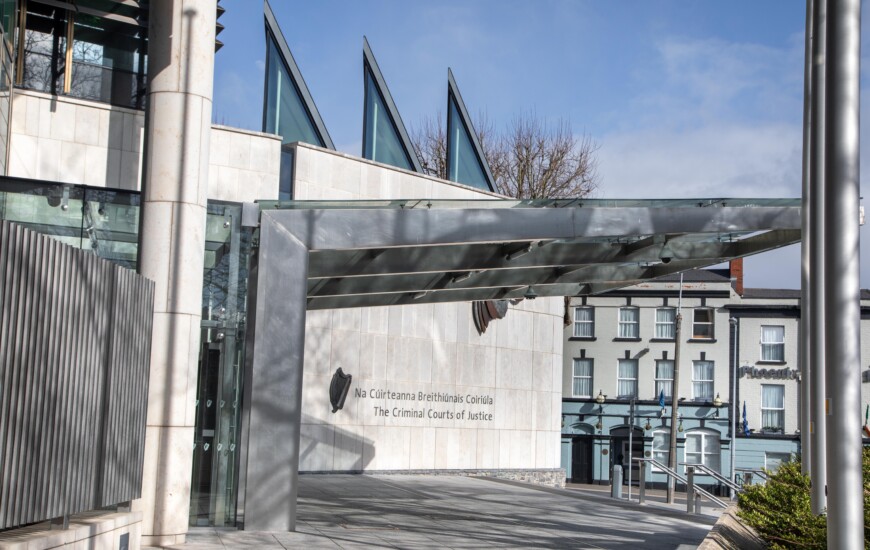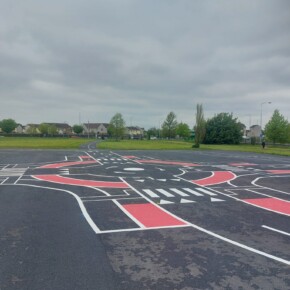Fatal dangerous driving accused could have been “in and out of consciousness due to low glucose levels”
Padraig Conlon 17 Nov 2023
By Claire Henry
A professor who specialises in treating diabetes has told a jury that the driver of a car could have been in and out of consciousness due to low glucose levels when he caused a fatal car accident on a Dublin motorway.
Gerry Daly (57) Derby Lodge, Brownstown, the Curragh, Kildare, pleaded not guilty at Dublin Circuit Criminal Court to dangerous driving causing the death of Jacqueline Griffin (39) at junction five of the M50 on January 24, 2019.
The jury heard yesterday from Sergeant Patrick McElroy, who at the time was a Forensic Collision Investigator.
His role was to attend the scene of fatal and life-altering collisions. He was tasked with examining the scene where the fatal collision took place.
When he arrived at the location, he began to photograph and document the scene.
Sgt McElroy examined CCTV footage obtained by gardaí and examined the vehicles involved in the accident.
After examining all available information, including witness statements, he compiled a report.
Reading from his report, Stg McElroy outlined that three vehicles were involved and multiple barriers were struck.
He said that Mr Daly’s car “mounted the kerbside” and then made contact with the rear of a Scania lorry, which resulted in the Auris’s wing mirror breaking off.
The car then collided with the rear of Ms Griffin’s VW Polo.
The jury heard that the force of this impact threw Ms Griffin into the back of her car.
The angle of the impact resulted in the VW Polo rotating and colliding with a barrier. It then rolled up on the barrier and back onto the motorway.
These movements resulted in Ms Griffin’s head becoming exposed and her head became severed.
The report said Mr Daly’s car continued to travel, colliding with the nearside and offside barrier, as well as causing damage to a Toyota Avensis.
The jury heard that Sgt McElroy had undertaken additional education to allow him to analyse the speed of a vehicle travelling using CCTV footage.
Sgt McElroy said that he used road markings such as continuous white lines and CCTV from a camera positioned at Junction 5.
It was his evidence that Mr Daly’s car was travelling at a speed of somewhere between 138-151km per hour at the time of the accident.
Garda Aidan McHugh gave evidence to the court that he interviewed Mr Daly by appointment on Jan 28, 2019.
Mr Daly gave a voluntary interview to the gardaí and was cooperative.
He described the day of the accident as getting up in the morning, checking his blood sugar levels, what he had to eat and his morning at work.
The court heard that Mr Daly had a phone call with a colleague at 10.30 am on the morning of the fatal accident.
He described his phone call as “cloudy” in his interview with gardaí. He said he left his place of work and “ended up on the M50”.
He described the weather on the day as being bad and said he “couldn’t get off the M50 and that he hit a barrier”.
When the crash occurred, Mr Daly thought his car was on fire as there was a lot of smoke.
Paramedics arrived at the scene and gave him glucose.
He was taken to Connolly Hospital in Blanchardstown.
Mr Daly told gardaí that he held a full Irish driver’s licence, and his insurer was aware of his diabetes.
Gda McHugh asked Mr Daly if he remembered driving at high speed on the M50, to which he replied, “I remember driving erratically but not sure where.”
Mr Daly was charged with dangerous driving causing death on Dec 17, 2019.
Gda McHugh agreed with Roderick O’Hanlon SC, defending, that Mr Daly cooperated fully and assisted with this tragic accident.
The garda also agreed that Mr Daly has no previous convictions.
Mr O’Hanlon said his client indicated in his interview that he frequently drives on the M50, and there were no other incidents like road traffic matters that have come to the gardaí attention, which Gda McHugh agreed with.
Professor Simon Heller, who is a Professor at Sheffield University and has a clinical practice in Sheffield, is a specialist in the treatment of diabetes, with an area of interest in hypoglycaemia.
Prof Heller outlined that Type 1 diabetes is a result of the destruction of cells in the pancreas.
He told the jury that the normal levels of blood sugar for people with Type 1 diabetes is between 4-8.
Mr Garnet Orange SC, prosecuting, asked Prof Heller if the onset of a “hypo event” would have warning signs, to which he replied, “Yes, at the lower range of four, the body would release stress hormones and adrenaline.
“This would cause the body to sweat and have a pounding heart.”
He noted that these symptoms can diminish over time, and other symptoms described as “not feeling right and blurred vision” could occur.
The court heard that Mr Daly uses an app on his phone and a sensor on his arm to check his blood sugar levels.
Prof Heller said he studied the data from his app and said that when Mr Daly checked his blood sugar levels upon waking, they were 9.3, which he said is “just above normal”.
When Mr Daly arrived at work, he checked the levels again, and they were 7.3 and 7.0, which are normal levels.
Prof Heller said that the glucose levels dropped again to 5.2 later in the morning but said this is still within the normal level.
At 8.30 am, another measurement is taken with a reading of 3.8.
By 9.30 am, the levels had reached 3.3. At this level, Mr Daly would be cognitively impaired, said Prof Heller.
As Mr Daly drove on the M50, Prof Heller said his glucose was now well below what we would consider brain dysfunction, and said, “Mr Daly could have been in and out of consciousness.”
Prof Heller agreed with Mr O’Hanlon, defending, that the app Mr Daly was using to monitor his diabetes was revolutionary.
He also agreed that Mr Daly was endeavouring to take all possible steps to ensure he maintained his blood sugar.
Mr O’Hanlon said to Prof Heller that he had described how a patient might feel prior to an event like sweating, but over the long term, the warning signs can diminish, which he agreed was true.
Prof Heller also outlined that Mr Daly had shown some warning signs in the year before this event.
Counsel said, “It seems that from before Mr Daly got into the car up until after the accident, his range was at a severe level, which the Professor agreed with.
Mr O’Hanlon asked Prof Heller if he “would be concerned with what Mr Daly could say immediately after the accident which he replied, “studies show that it can take up to 45 minutes to recover from the cognitive impairment”.
The trial continues before Judge Elma Sheahan on Monday.











